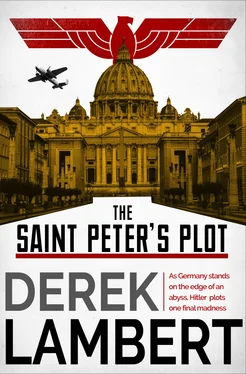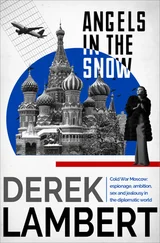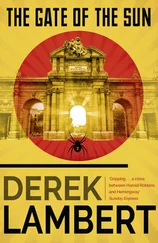The possibility of a desk job within the Wehrmacht remained.
Kurt fled to a health clinic in the Bavarian Alps.
There for six gruelling months, under the supervision of an ageing athlete named Muller, he punished himself.
He hung from wall-bars until it seemed as if his arms were being pulled from their sockets; he ran hundreds of miles along mountain paths; he exercised with the chest-expanders until the springs broke; he swam thirty lengths a day in an ice-cold pool; he boxed with professional pugilists so that his eyes were permanently blacked for the entire six months; he lifted weights so heavy that Muller warned him about the dangers of a hernia; every morning at dawn he stood on the balcony of the health centre and breathed deeply of the frosted mountain air; he climbed ropes and vaulted leather-topped boxes and he performed press-ups until he collapsed on the floor gasping with pain.
He ate steak and fish, cheese and eggs, and fresh vegetables and slept precisely eight hours a night. He walked always with his chest thrust forward and his belly pulled in. He didn’t smoke, he didn’t touch liquor, and he didn’t visit the whores in the nearby town like some of the young men who left the health clinic with new diseases instead of cures.
And he won.
When he returned to war-time Munich — Germany was now at war with Britain and France — he was hardly recognisable as the weakling who had left six months earlier.
The bellows of his chest no longer wheezed: his back was straight, his ribs were finely muscled, his biceps bulged the arms of his old suits, his face was still pale but there was health in his lips and eyes.
He immediately reapplied to join the Leibstandarte, and kept out of his father’s way for a week.
When he was accepted he went to a bar and drank a beer and a Schnapps, and angrily brushed at his eyes with the sleeve of his jacket as joy expanded inside him.
While he was being trained and crammed with Nazi doctrinaire, the Leibstandarte were blazing trails across Holland and France as the demoralised Allies fell back to the final withdrawal at Dunkirk.
At college Kurt had always shown a flare for engineering and he knew more about armoured vehicles than many a Wehrmacht general. After his initial training, the toughest in Germany, he went on a tank course and astonished his instructors with his knowledge of the Mark IV.
His expertise with armoured vehicles kept him in Germany until early in 1941. when he was commissioned. All the time he fretted for action and, after pestering superior officers with requests for a posting, he finally joined the Leibstandarte fighting in Greece.
By June 1941 Obersturmführer Kurt Wolff was in command of a Mark IV poised for the invasion of Russia. The tank was one of 3,580 on the banks of the River Bug, supplemented by 7,184 guns, 600,000 assorted vehicles, 2,000 aircraft and 750,000 horses.
At 3.15 am on June 22nd the guns opened up, the tanks rumbled forward and the bewildered Russians were overwhelmed.
The Leibstandarte captured a key bridgehead over the Dnieper and headed triumphantly towards the Black Sea, slowing down as summer storms turned roads and steppe into glue.
One morning in July, with the armoured column bogged down in black mud, Wolff and a party of six men were sent into a wood of silver birch to smoke out a harrassing detachment of the retreating Red Army.
Most of the men never saw the Russian detachment.
Two grenades hurled them to the ground. Then, as they tried to crawl for cover, the Russians picked them off among the skeletal, dripping trees with rifle and machine-gun fire.
One bullet ricocheted off Wolff’s steel helmet, another hit him in the belly, and a third bared his cheekbone.
At first there was no pain, just a wave of shock. Wolff grabbed a stick-grenade from the outstretched hand of a dead man beside him, pulled out the china pin, counted to three and hurled it in the direction of the gunfire. A sheet of flame. Silence. Then the cries of wounded men.
With one hand pressed to his belly Wolff inspected his comrades. Only two were still alive. He began to pull one of them to the comparative safety of a pile of sawed logs — as the Russian riflemen opened up again.
Wolff, blood pouring down his cheek, dragged the first man behind the logs. Then returned for the second. On the way back he prised a Schmeisser from the fingers of a dead corporal sitting against the trunk of a birch tree as though on a picnic. Then Wolff collapsed, feigning death, which in any case didn’t seem far away.
The shooting stopped.
After a few moments he heard the snap of twigs as the Soviet troops cautiously approached. There were four of them. The leader kicked the first body with his boot and put a bullet through the head just in case.
As the crack of the shot lost itself in the trees, Wolff squeezed the trigger of the Schmeisser and watched with terrible fascination as the four Russians doubled up and died. They were the first men he had killed. They were to be the last for a long time.
He was dragging the body of the other wounded German towards the pile of logs when reinforcements arrived. He collapsed at their feet.
He was transferred to a military hospital in Poland where the doctors shook their heads as they surveyed the wound in his belly. “He will never fight again,” they murmured. “If he lives, that is.”
But they reckoned without the singleness of purpose that had transformed a weakling destined for a desk in Berlin to a member of Hitler’s elite fighting unit.
Slowly, very slowly, he recovered and was awarded the Knight’s Cross ‘for his courage in single-handedly wiping out a unit of enemy troops.’
Then he was posted to a training camp where he worked on the new Tiger tanks fitted with tracks 2½ feet wide, anti-magnetic armour and adaptations to enable their engines to start in sub-zero Russia.
And all the time Wolff, still deemed unfit for active service, fretted to be back with the Leibstandarte proper as he read of the exploits of his heroes, Sepp Dietrich who answered only to Hitler, Jochen Peiper, the hero of Kharkov, and his swashbuckling comrade Kurt Meyer known as Panzermeyer.
By this time the SS Panzer Divisions had been formed under the command of an SS general. They were the most feared troops in Russia and Kurt Wolff yearned to be with them.
Once again he harangued his superiors until he was finally allowed to go before a medical board. By this time the SS were desperate for manpower — they had taken volunteers from Holland, Spain, Sweden, France (even fifty British) and ethnic Germans from the Balkans.
Wolff was pronounced fit.
In the early summer of 1943 he returned to the Russian Front where the Germans were on the defensive after Stalingrad, the biggest defeat inflicted on the Germans since the Napoleonic Wars.
But Wolff, sheltered from reality by his wounds, could not conceive of defeat. He hadn’t been brutalised. Nor, because of the physical defects of his teens, had he witnessed the early massacres and executions in Europe.
He was still an idealist.
He was the stuff heroes are made of.
He was the obvious choice for Grey Fox.
VII
Wolff’s second test took place in a ruined farmhouse 150 miles behind the sagging German front-line.
He had been pulled back from the Viking — to which he had been seconded to patch up broken-down-tanks to an assembly camp prior to rejoining the Leibstandarte.
He was quartered in the farmhouse in one of the few rooms that still had a roof over it. (The farmhouse and the surrounding village had been razed by the Germans during the great advance.)
He shared it with two Wehrmacht officers, a Captain Steiner and a Major Wenck.
As he unpacked they remarked on the Runic flashes of lightning on his steel helmet and the death’s head on his peaked cap.
Читать дальше












